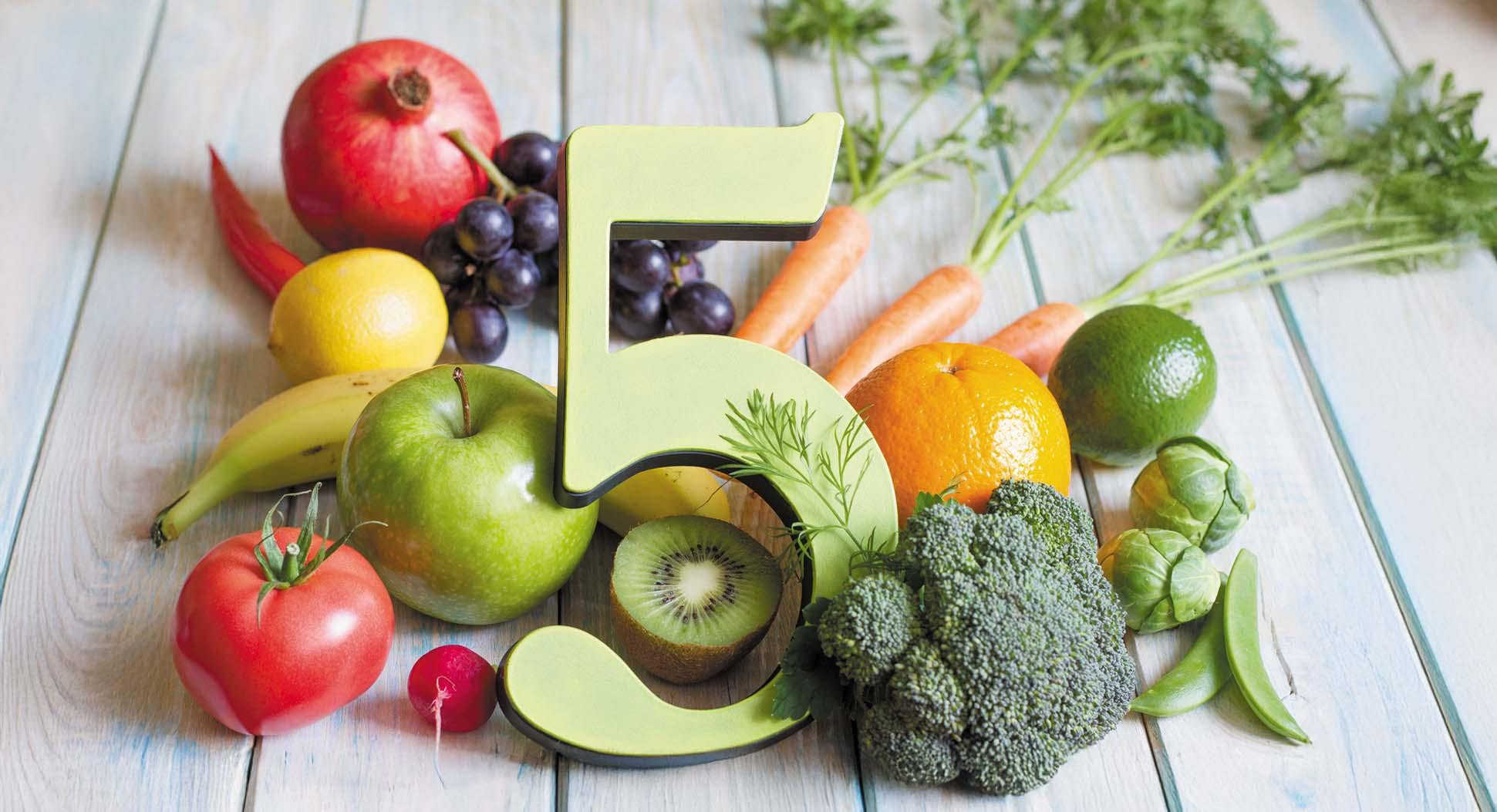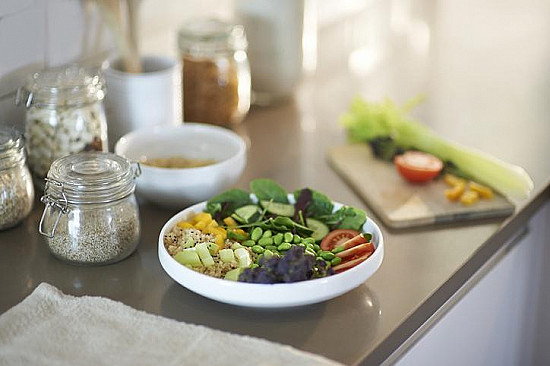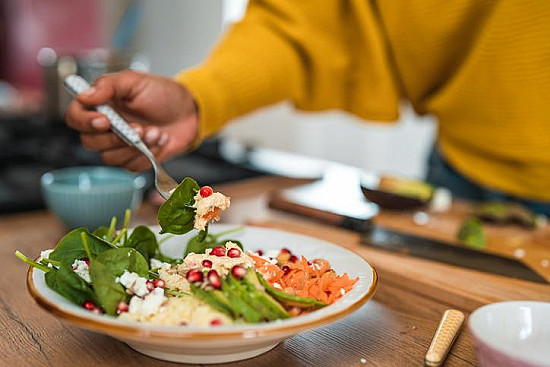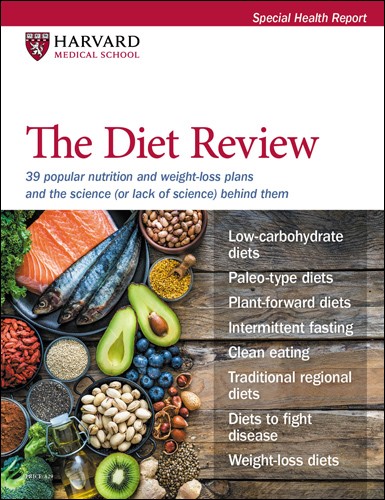A 5-step plan to eat more produce
Few people eat the recommended amount of fruits and vegetables. Here's how to add more of these healthy foods to your diet.
- Reviewed by Christopher P. Cannon, MD, Editor in Chief, Harvard Heart Letter; Editorial Advisory Board Member, Harvard Health Publishing

The familiar “five-a-day” campaign — designed to encourage people to eat five fruits and vegetables daily — dates back to the late 1980s. Nearly four decades later, most Americans still don’t come close to meeting that goal. But if you’re concerned about your cardiovascular health, including plenty of produce in your diet should be a top priority, as new research confirms (see “Fruits and veggies: The more, the better for heart health”).
“Many people are motivated to eat well, but they often encounter a range of obstacles that may hinder their efforts,” says Sasha Bayat, a registered dietitian at Harvard-affiliated Brigham and Women’s Hospital. For instance, they’re not sure how to incorporate vegetables into their meals, or they think that doing so would be too time-consuming. Others are concerned about their produce going bad before they can use it, while some are confused about whether fruit is actually healthy, she says. To address these issues, here are Bayat’s five favorite tips.
Fruits and veggies: The more, the better for heart healthEating even two servings of fruits and vegetables a day was associated with a lower risk of dying from any cause, but especially from heart disease, according to a large study from Spain. Published in the February 2025 issue of Public Health, the study drew on detailed dietary data gathered from nearly 67,000 people in three separate health surveys between 2011 and 2017. The researchers then cross-checked the participants against the national death registry through 2022. Compared with people who rarely ate fruits or vegetables (fewer than three times a week), those who ate fruits and vegetables two or more times daily had a 20% lower risk of dying from any cause. And the more produce people ate, the better. While the longevity advantage from eating fruit appeared to peak at two servings per day, the benefit from vegetables rose steadily from two servings to five servings per day, most notably when it came to risk of death from cardiovascular causes. In fact, a combined daily intake of 10 fruits and vegetables provided even more protection. |
1. Know the goal, but start small
The five-a-day formula refers to two servings of fruit and three of vegetables per day (see “What counts as a serving?”). For a lot of people, that goal may seem daunting. So Bayat advises her patients to focus on making just one small change at a time and sticking with it for a few weeks before incorporating another change. Here are some ide-as for simple additions or swaps:
Breakfast. Add a handful of blueberries or chopped apple to oatmeal or other cereal. Add vegetables, such as chopped bell peppers or mushrooms, to scrambled eggs.
Lunch. Replace the cheese on your sandwich with sliced avocado. Add a handful of spinach and some tomato slices to your sandwich.
Dinner. Swap out starchy carbohydrates like potatoes or bread for a serving of vegetables such as broccoli, carrots, or purple cabbage. Make your side salad more enticing by topping it with roasted chickpeas, nuts or seeds (try walnuts, almonds, or pepitas), or cubed mozzarella cheese.
What counts as a serving?Choose a variety of produce to meet your five-a day goal. In general, one cup equals one serving, except for leafy greens. For vegetable juice, a serving is one cup. For fruit juice or dried fruit, a serving is one-half cup. |
|
|
FRUITS: 2 servings per day |
VEGETABLES: 3 servings per day |
|
|
2. Select smarter snacks
If you have a midafternoon energy slump, reach for an apple, orange, or banana instead of chips or a cookie. “Some of my patients hesitate to eat fruit because they’ve heard it’s full of sugar and will make them gain weight,” says Bayat. But the sugar in fruit comes with a healthy dose of fiber, so it doesn’t cause the same blood sugar spike as foods full of refined carbohydrates like table sugar and white flour, she explains. Plus, fruit is a great source of vitamins, minerals, and phytochemicals, the naturally occurring substances in plants thought to lower heart disease risk. Enjoy fruit with nut butter or low-fat cottage cheese, which can further blunt a rise in blood sugar and make your snack more satisfying. If you crave something crunchy but not sweet, have carrot, celery, or bell pepper sticks dipped in hummus or a dip made with Greek yogurt, Bayat suggests.
3. Stock your freezer
Nutrition-wise, frozen vegetables and fruits are similar to — perhaps even better than — fresh. They’re picked at the peak of ripeness and immediately flash-frozen, which helps preserve their nutrients. Also, buying frozen helps avoid spoilage that can occur with fresh produce. Stock a selection of your favorites, which you can easily microwave and serve alongside your main dish or incorporate into various recipes, Bayat says.
4. Sneak in extra veggies
Adding vegetables to dishes in which their presence might be less noticeable can be a good strategy. Add finely chopped or pureed vegetables to pasta, casseroles, sauces, or baked goods, which can introduce new flavors and textures to these familiar foods. Soup is a great way to eat a variety of vegetables (see “Soup up your diet” in the December 2024 Heart Letter). When the weather’s warm, try cold soups such as gazpacho or fruit soups made from stone fruits or melons.
5. Give smoothies a whirl
Smoothies are another convenient way to pack more produce into your diet. Traditionally based on fruits such as bananas and berries, smoothies can also include other healthful foods, including leafy greens such as kale and spinach. And if you also add protein and healthy fat, a smoothie can complement or even replace a meal, says Bayat. See “Create your own smoothie” below for suggested ingredient combinations that you can alter to match your dietary preferences or restrictions.
Create your own smoothieTo create a balanced smoothie, select ingredients from each of the four columns below. Puree together in a blender, with ice if desired. |
|||
|
Base (1 cup) |
Protein (amounts as noted) |
Nutrient boosters (amounts as noted) |
Flavor enhancers (1/2 to 3 teaspoons) |
|
Water Milk Milk alternatives: almond, cashew, hemp, pea, rice, soy |
Greek yogurt (1/2 cup) Nut butter (1 to 2 tablespoons): peanut, almond, cashew Pasteurized egg substitute (1/4 cup) Protein powder (1 scoop or 2 tablespoons) Tofu (1/2 cup) |
Fruits (1/2 to 3/4 cup): berries, bananas, citrus, pineapple, mango Cooked vegetables (1/2 to 3/4 cup): beets, carrots, pumpkin puree Leafy greens (1 cup): kale, spinach Rolled oats (1/4 to 1/2 cup) Seeds (2 to 3 teaspoons): chia, flax, hemp |
Extracts: vanilla, almond Herbs and spices: cinnamon, ginger, fresh mint leaves Instant coffee powder Sweeteners: agave nectar, honey, maple syrup Unsweetened cocoa |
This article is brought to you by HarvardHealthOnline+, the trusted subscription service from Harvard Medical School. Subscribers enjoy unlimited access to our entire website, including exclusive content, tools, and features available only to members. If you're already a subscriber, you can access your library here.
Image: © udra/Getty Images
About the Author

Julie Corliss, Executive Editor, Harvard Heart Letter
About the Reviewer

Christopher P. Cannon, MD, Editor in Chief, Harvard Heart Letter; Editorial Advisory Board Member, Harvard Health Publishing
Disclaimer:
As a service to our readers, Harvard Health Publishing provides access to our library of archived content. Please note the date of last review or update on all articles.
No content on this site, regardless of date, should ever be used as a substitute for direct medical advice from your doctor or other qualified clinician.
















